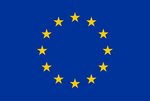In biology, the reaction–diffusion–advection equation is used to model chemotaxis – oriented movements of cells in response to a chemical gradient – observed in bacteria, population migration, evolutionary adaptation to changing environments and the spatiotemporal dynamics of molecular species including morphogenesis. The EU-funded STOPATT project will use the equation for logistic population growth to study chemotaxis. The system under study will be perturbed by a stochastic noise term, modelling neglected fluctuations or random perturbations from outside. The stochastic term leads to new phenomena such as bifurcation, metastability or sudden shifts to other, possibly undesired, states.
There are basically three mechanisms for spatial pattern formation in systems of two coupled reaction-advection-diffusion equations; the Turing patterns, patterns created through reaction kinetics, and chemotaxis patterns. We are interested in the reaction-diffusion equation with underlying chemotaxis. The terminus chemotaxis refers to oriented movements of cells (or an organism) in response to a chemical gradient. The topic of the proposal to investigate the logistic grow equation with underlying chemotaxis. This system will be perturbed by a stochastic noise term, modelling neglected fluctuations or random perturbations from outside. The stochastic term leads to new phenomena, e.g. bifurcation are smeared out, metastability may happen, or sudden shifts to other, possible undesired, states. First, the existence and uniqueness of the solution should be investigated; then the long term behaviour will be analysed. Here, also the dynamical behaviour should be characterised. The third point, we will focus on is the numerical approximation of the system.

